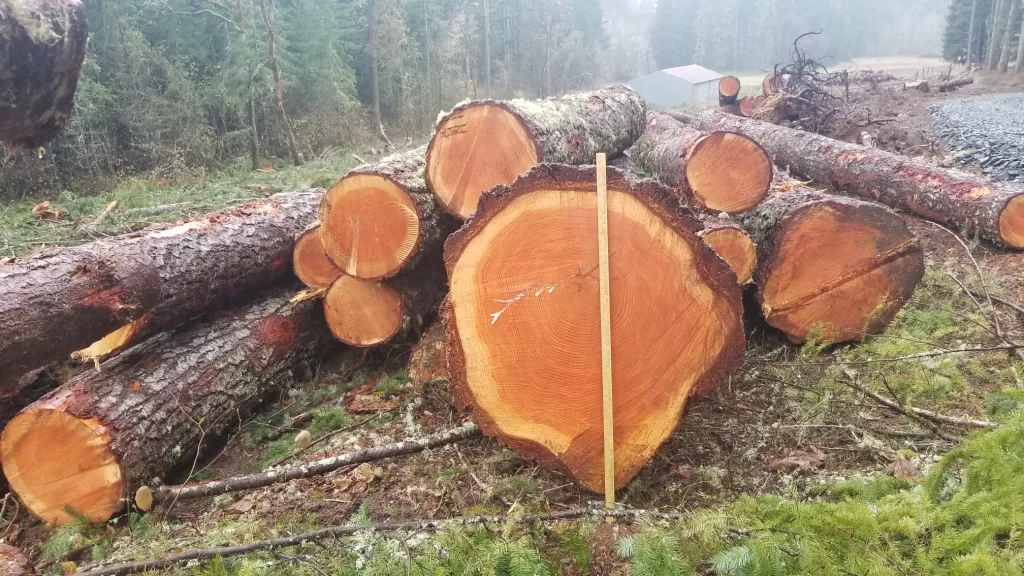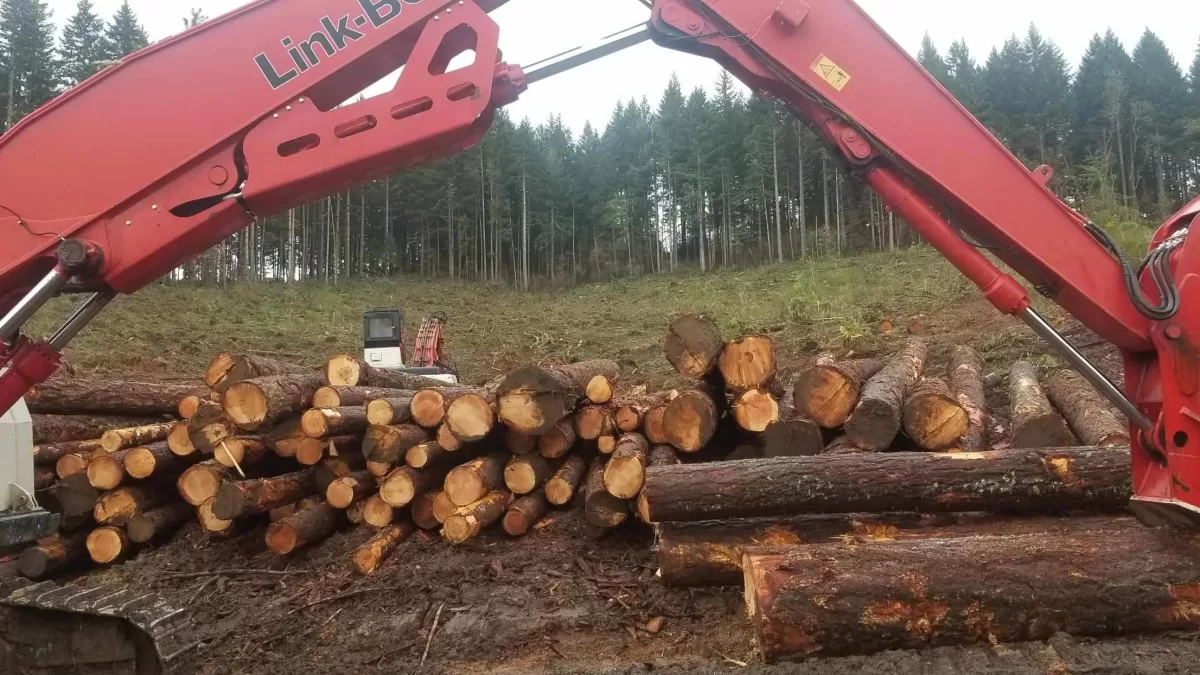
One gram of moss from the forest floor, a piece about the size of a muffin, would harbor 150,000 Protozoa, 132,000 tardigrades, 3,000 springtails, 800 rotifers, 500 nematodes, 400 mites, and 200 fly larvae. These numbers tell us something about the astounding quantity of life in a handful of moss.
- ~Robin Wall Kimmerer
God has cared for these trees, saved them from drought, disease, avalanches, and a thousand tempests and floods. But he cannot save them from fools.
- ~John Muir
Ancient trees are precious. There is little else on Earth that plays host to such a rich community of life within a single living organism.
- ~Sir David Attenborough
If you think in terms of a year, plant a seed; if in terms of ten years, plant trees; if in terms of a hundred years, teach people.
- ~Confucius

We have readers all over the world. One of them reached out to us with a story he needed to share. This story is close to home, yet far enough away to ignore. The reality, though, is that this story touches us all.
This reader, who lives in a different state, had a new neighbor, one who moved there from the Santa Monica Mountains. The neighbor acquired acreage with dense forest, rich with wildlife and nature. He got some farm animals and started a garden.
Many of us wonder about giving up the high overhead of a Los Angeles-adjacent lifestyle and starting a new way of living, in a more rural community where nature abounds and land is affordable. His vision wasn’t unique, but he was one of the ones making it happen.
For a year or two, this new neighbor shared his experiences of getting back to the land. He posted photos and wrote about “the simple life.” He shared his dream.
Then something changed. This man made a decision that we’d like to think that we’d never make. After two years of “farm life”, he sold the property to a logging company that is clear-cutting the land as I write this.
“This is perfectly legal and nearly impossible to stop,” the reader wrote to us “The laws of the state allow private property to deforest the land for timber, leaving all the neighbors (both animal and human) devastated.”
Before it was purchased by the reader’s new neighbor, this particular piece of land had been owned by the same family for a century. The trees were mature, with deep underground networks. Wildlife was thriving under a dense canopy. There are numerous streams and a large pond, fostering many different kinds of aquatic life. People had been coexisting with nature; benefitting from the clean, purified air, the woodland beauty, and the reprieve from modern life.
These hundred-year-old trees provided homes for millions of species and oxygen for all life on earth. These trees will no longer be able to sink many tons of carbon annually. With the cutting, slashing, and burning of the remaining stumps, centuries of sequestered carbon will be released into the environment as well.
The reader explained that the state requires the logging company to plant new trees to “reforest” the area, but young monoculture tree farms cannot compare to complex forest systems. Wildlife such as fishers, spotted owls, beavers, marbled murrelets, red tree voles, and various types of amphibians have been particularly threatened by clear-cut plantation forestry. They depend on intact, diverse forests, and are notably absent on private industrial timberlands. The new saplings can be devoured by deer and overtaken by weeds. If any of them survive, they need 100 years before they can sequester as much carbon as their predecessors.
Invasive species will thrive because of the newly available sunlight, and that weedy growth will compete with the tree seedlings. To protect the new plantings, helicopters will liberally spray the area with carcinogenic herbicides in the coming months. Beyond the intended target area, neighbors will suffer from chemical “drift” contaminating their crops, contaminating their waterways, and sometimes making them ill. Without the mature tree roots to help with water retention, this contaminated topsoil will run off into the nearby streams, harming fish and amphibian life. The loss of topsoil coupled with the lack of protective tree canopy leads to desertification, a common result of deforestation. Weedy brush that does survive the spray will dry in the summer, providing fuel for wildfire.
Why did this neighbor choose this path? Did he have other options? What led to the decision to sell and clearcut? We don’t know. Naming and blaming won’t help the trees grow back. Nothing can re-home the animals that have lost their ecosystem. This article can’t stop the spray of herbicide or the waterway contamination.
This story is happening all over the planet on a much larger scale than this little farm property.
We are all impacted by the loss of more wild earth. We must work to change the laws that allowed this to happen. We can choose to use our dollars in support of sustainably-sourced wood whenever possible.
But, most of all, when we are lucky enough to be stewards of the land, I hope this story will be a reminder to be responsible for the life that land holds.

Texts from a devastated neighbor left to watch the process and live with the changed landscape:
“It is difficult to appreciate the destruction from photos.”
“The heart-sink feeling was overwhelming. Everything within the boundaries is taken or destroyed.”
“It is so frustrating that we cannot do anything to stop this. There is no drumming up support to stop the logging. It is important, however, not to turn away without notice or mention.”
“The saws continue day after day, with the loud crashing of trees falling to the ground.”
“The cutting will not stop until all the trees within the designated area are all gone. Everything, regardless of species or size is cut down.”
“The work is complete. A vibrant, mature forest has been taken to the ground and hauled away. Animals are dead and displaced. The landscape is scoured. Homes and habitat are lost. Old trees that mitigate climate change and support a wide range of life are gone. All destroyed by greed.”
“Unfortunately, it was wishful thinking on my part. The cutting of large trees has continued every day without pause.”
“The former forest floor had not seen direct sunlight in over 100 years. It will bake in the summer sun, and be a fire hazard for years to come. Those trees sustained over a dozen species of birds and forest dwelling animals. Now gone.”
“This was a premeditated criminal act against Nature. The valley that was filled with life, and a mature nurturing forest will soon be covered by scotch broom, blackberry vines, and poison oak. It will dry in the summer and remain a dead zone susceptible to fires.”















I know who wrote this as I am also a neighbor to this land. The person that bought the land made his millions on a food and diet ap. Then when he realized how much work it is to up keep forested land he decided to move. He told no one and then began searching for a timber company to purchase it from him as he knew that they would be the only ones that would pay him more than he gave for it. He waited exactly the two years that he needed to get the tax breaks then logging began immediately on day one that the logging company owned it. This is why us Oregonians are so reluctant to welcome out of staters here. They only respect the land until they realize the commitment it takes to live here. Then the do what they want to do as opposed to what they should do morally. Then go back to city life and leave their Devastation behind for the rest of us to deal with.
My family and I are also neighbors to this land, and we welcomed the newcomer and his children to their new home here.
The man and his visitors extolled the natural beauty and wonder of this place in many posts that have been recently removed from Facebook and instagram
He called it George’s Farm. George was the name of the prior and now deceased owner.
George and his family revered this land, and were for many decades, the guardian stewards of this life giving forest and all that it contained. This forest supported many generations of animals who lived within the bounds of this bountiful sanctuary for wildlife.
Everything changed most abruptly due to the greed of a single person. By selling this land to a logger who intended to clearcut, the heartless man knew that he had condemned all the life contained in the Beaver Creek Valley to a violent and tragic end.
The trees are gone, as are the countless animals who were killed by the logging operations. Those that survived have been displaced onto adjacent lands, as their home and ecosystem has been completely destroyed.
Google: “Images Georges Farm World” to see BEFORE photos that remain online. Pictures taken by the man and his visitors show a glimpse of the land as it was.